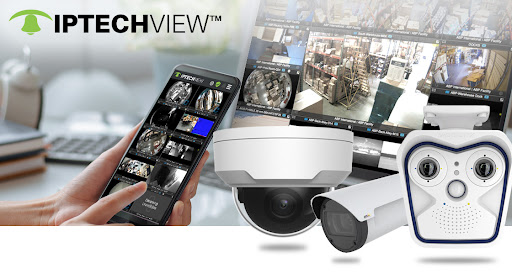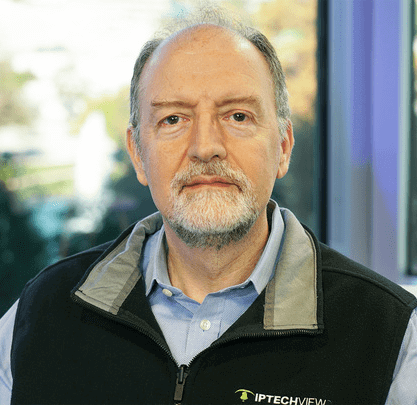How VSaaS And Business Security Cameras Can Support Law Enforcement
Article published on Security Journal Americas: 8/2/2022

When businesses select a security system in the US and Canada, they typically do not consider the need or even the possibility of integrating it with Law Enforcement. In America, it's just not something that today is done widely. Those who think about it mostly abandon the idea once they consider privacy and security issues. Yet, it is an exciting option that, if managed well and with the right system, could increase the utility and add value for citizens and police. On the residential side, this has been done with the most famous example being RING, but there are downsides. Today we can see opposition and even political initiatives to strengthen privacy aspects of the RING system that is seen as "Too Cop Friendly."
In other regions of the world, integrating security systems with LEA is the norm and is done with different degrees of access and integration, from full control in projects in China to a more on-demand and incident management in the Middle East,
I.G. The United Arab Emirates (Abu Dhabi Law Executive Regulation No5 of 2011 "The(MCC) regulation" ties all Security Surveillance systems to the government MCC (Monitoring and Control Center).
In the United States, separation of government and business is the norm, privacy is highly cherished, systems deployed by enterprises are typically not interconnected, and access stays in private hands.
Even in the US, after the recent Roe vs. Wade reversal, Digital Surveillance potentially could threaten Reproductive Freedom. It has become clear that there are two sides to video surveillance and any always-on security integration will become very contentious, and to mandate and create an always-connected, centrally accessible system would be highly unpopular and probably not pass. But that does not mean there is not a way to collaborate and streamline sharing of footage in situations where it is clear that a crime has happened.
How could this be resolved, and what tools would best support such an on-demand-based collaboration? The security industry itself is at the beginning of a shift from On-premise Security Camera solutions to cloud-based, which is also proving to be a time of faster changes and a technology environment that makes different kinds of integration viable and can significantly reduce the time between an event being recorded and the footage or even live view of such an event being shared. What will the future be like, and how can we balance creating a more effective surveillance system yet prevent potential negative effects on civil liberties?
It shows in practice that when cloud video surveillance as a service (Short VSaaS ) is highly based on central A.I., particularly around pervasive Face Recognition, there is a higher potential the system will be used to infringe on privacy and civil liberties. Schools and other venues using VSaaS like Verkada with built-in Face Recognition are getting a lot of political pushback for potentially compromising students' and teachers' civil liberties. The trick is to find the right balance and use a VSaaS that is strong at detecting people in general and recording quality video of activity instead of letting the A.I. do all the filtering and classifying of everything.
Technology is helping improve productivity thru digital transformation in all ways of life. National Institute of Justice Research shows that the chance of being caught is a vastly more effective deterrent than even draconian punishment. This leads to the concussion that a highly visible video surveillance system will make a difference. But the system needs to produce quality evidence effectively so Law Enforcement can do their job. The more criminals that get caught through surveillance systems in practice, the more dissuasive and effective these systems become for society.
Today when businesses want to enhance or upgrade their security, there are several not-so-obvious dimensions to consider.
1). On-premise vs. cloud-based video surveillance (VSaaS) and system architecture.
2). Salvaging current security cameras or replacing them with all new?
3). What is the system's learning curve for new users, employees, and stakeholders like police officers?
4). Will the system scale to the complete needs of the organization in the next five years? Could it be connected to a more comprehensive federated incident-based solution?
6). Will there be Vendor lock-in, and can the system do more than just video surveillance?
We believe the question of on-premise vs. cloud is probably the most important one. On-premise tends to be 'lumpy'; it's hard to start small and scale big. Counter-intuitively it is also less safe. On-premise systems and customer networks typically have less stringent security than a commercial cloud-based service dependent on maintaining security and privacy.
A modern VSaaS should not require servers or bridges. These become single points of failure and can be stolen or destroyed. All cameras should independently connect to the cloud, and critical cameras should offer a full cloud recording option as opposed to the video all staying in the camera SD-Card. Else in the event of an incident, the camera could be destroyed by bad actors or by fire, flood, or wind with no external backup available. We are particularly proud of our own platform IPTECHVIEW.COM which operates as Just Camera and CloudTM and supports a mix and match storage strategy to help lower the dollar average of a project's storage cost while ensuring redundant access to the critical video.

Most will consider or even prefer a system that can leverage the old cameras when upgrading a system. That may be OK when using high-quality, durable cameras like AXIS or Mobotix that have an MTBF >10 years. (Mean Time Between Failures over ten years). The useful life is often less than 24 months on other less expensive cameras, and most older cameras don't have some of the more essential features like in-camera people detection. Considering that the cost of installing cameras can exceed their price, and there is a cost of opportunity or loss of some kind when the camera fails, it is best to consider using new fresh, technology-updated cameras when rolling out a new system. For us, one of the most important features is an A.I. based on the person and vehicle detection. This will save storage costs and users from looking at hours of video with no real action and, most importantly, eliminate false positives in alerts and ensure that there is video when people are detected. A good VSaaS should have proactive, individually self-configurable alerts that can use a wide array of notification profiles handling channels like SMS, Email, and even SLACK for one-to-many notifications that are internal to the organization or other web-hook-based integrations.
Another key feature of a VSaaS is a Good Alarm System Integration. AlarmReady TM is a solution that provides free universal Alarm System connectivity via the VSaaS and provides instant alerts along with a link for users to self-verify their cameras. It is so fast that users get the notification before their monitoring company calls to ask if they should send the police. In-camera A.I. live person detection after-hours can be combined with Alarm-Ready to create a second level of protection. Most importantly, these technologies contribute to eliminating false alarms saving users scares and reducing wasteful trips for the local police that may be taking capacity away from targeting real and more serious situations.
Ease of use and simplicity is essential, particularly in systems used in times of stress. A modern VSaaS should be usable by HR, Warehouse managers, and even regular staff and the CEO without any prior training, while at the same time provisioning power-users like loss prevention a rich and full product. A VSaaS should be able to immediately, with minimum effort and no prior training, forward recorded video and links to live video to management, owners, or Law Enforcement when needed. Ideally, this will work with a simple SMS or email with a link that can be seen on any smartphone, pad, laptop, or desktop. Law Enforcement dispatch officers that never used the system, should be able to immediately interpret what is going on, and be able to forward links to officers in the field so they can check out the site they will go to virtually before going in if that is deemed necessary and safe by the dispatcher.
In the case of the IPTECHVIEW VSaaS, this is done with a time-protected link that, by default, provides access to seeing and downloading the video sent. Live video links will allow access to a floor plan icon for better situational awareness and include the ability to see adjoint cameras on the same location during the validity of the access link.
Law Enforcement is notified by the business or organization when there is an alarm or emergency, which creates an "on-demand" system that is controlled by the system user or owner, similar to our usual approach to calling the police. This system fits perfectly well into our society, norms, and legal frameworks instead of an "always on" system.
The key here is for the VSaaS to operate on the lowest possible common denominator level. We recommend SMS and Email to share videos and links to streams so that there is no need for both sides to use the same systems. If a system is easy to use and works well, it will automatical spread, and its popularity can grow to the point that the same system will be used by private enterprises and by government and nonprofit organizations alike.
A highly scalable VSaaS platform is ideal for this and can be used by city services, police, and local businesses. Each business or organization has its camera networks and access privileges on the VSaaS, but by all using the same system, comprehension, situational awareness, and usability are very high when event incident information is shared. For example, our VSaaS platform IPTECHVIEW can offer customers an optional Inform LEA button if the platform is operating in an area where the city is also using IPTECHVIEW, and there is a collaboration between the city and its businesses. In all circumstances, companies have to initiate the push of events or live videos to LEA.
Particularly in small to mid-sized communities, the usage of a cost-effective, standardized platform that the city can use to protect buildings like the city hall, court house, fire and police departments, library, civic center, waste management facilities, and waterworks are huge.
Another interesting option of the IPTECHVIEW platform, in particular, is that the Cloud Functionality (VSaaS) can work in parallel with today's existing systems like AXIS cameras with Milestone or Mobotix cameras with MxMC (Mobotix free VMS). In such a setup, loss prevention in businesses or the city's video experts continues using their existing system, and cloud access can be given to other stakeholders on an as-need basis. This democratizes the surveillance video system, making an easier to use and less expensive (no license fees) solution available to all stakeholders with the need to access video. Offsite cloud storage is also important and offers redundancy. After a fire or a tornado, off-site video of facilities can be crucial. It can even save lives by helping prioritize the search for survivors by focusing on where there were people when the incident happened.

In our free society and business environment, it is essential to find the right balance, and neither find ourselves working in a world of disparate systems that do not communicate with each other nor end up in a mandated monopoly or a total surveillance society.
A nationwide cloud services platform that handles Video Surveillance, Access Control, and IoT, with a high standard for privacy and security, will segment accounts, use encryption of video during transit and at rest, and support multiple vendors and a variety of services and verticals.
Such a solution can offer the right mix of state-of-the-art functionality, cost-effectiveness, and civil governance that it can become a platform shared by citizens, businesses, cities, and law enforcement agencies.




